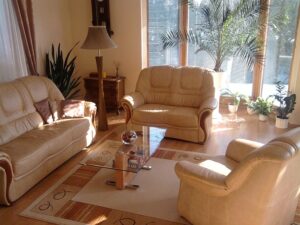Introduction
A pergola is an outdoor structure that has become increasingly popular in recent years. It is often seen in gardens, parks, and other outdoor spaces, providing a shaded area for relaxation and entertainment. In this article, we will explore what a pergola is, its purpose, different types, materials used, and its benefits.
What is a Pergola?
A pergola is an outdoor structure consisting of vertical posts or pillars that support crossbeams and an open lattice roof. It is designed to create a partially shaded area, offering protection from the sun while still allowing some sunlight to filter through. Pergolas are typically freestanding, although they can also be attached to a building or used to extend an existing structure.
Purpose of a Pergola
The primary purpose of a pergola is to provide a comfortable outdoor space that combines the benefits of shade and open-air. It offers a place to relax, entertain guests, or enjoy outdoor meals. Pergolas can also be used to define an outdoor area or create a transition between different parts of a garden or landscape.
Types of Pergolas
Pergolas come in various styles and designs to suit different preferences and architectural themes. Here are some common types of pergolas:
1. Traditional Pergola: This type features a classic design with evenly spaced crossbeams and an open lattice roof. It is often made of wood and blends well with natural surroundings.
2. Modern Pergola: A modern pergola typically has sleek lines and a minimalist design. It may incorporate materials like metal, glass, or even concrete for a contemporary look.
3. Attached Pergola: As the name suggests, an attached pergola is attached to an existing structure, such as a house or a building. It can provide an extension to the living space or serve as a covered walkway.
4. Freestanding Pergola: Freestanding pergolas are not attached to any structure and can be placed anywhere in the outdoor space. They offer more flexibility in terms of placement and can be used to create a separate seating area or a focal point in the garden.
Materials Used
Pergolas can be constructed using various materials, each with its own advantages and aesthetic appeal. Some common materials used for pergolas include:
1. Wood: Wood is a popular choice for its natural beauty and versatility. Cedar, redwood, and pressure-treated pine are commonly used due to their durability and resistance to decay.
2. Metal: Steel or aluminum pergolas are known for their strength and durability. They require less maintenance compared to wood and can be powder-coated in different colors for a customized look.
3. Vinyl: Vinyl pergolas are low-maintenance and resistant to rot, insects, and fading. They are available in different styles and colors, offering a wide range of design possibilities.
Benefits of a Pergola
Pergolas offer several benefits that make them a valuable addition to outdoor spaces:
1. Shade and Sun Protection: Pergolas provide a shaded area, protecting against direct sunlight and harmful UV rays. They allow for comfortable outdoor activities even during hot summer days.
2. Aesthetic Appeal: Pergolas enhance the visual appeal of outdoor spaces, adding a touch of elegance and charm. They can be customized to match the existing architecture or create a focal point in the garden.
3. Outdoor Living Space: Pergolas create an additional living space outdoors, expanding the usable area of a property. They can be furnished with seating, dining sets, or outdoor kitchens to create a cozy and functional outdoor room.
4. Plant Support: Pergolas can be used to support climbing plants, such as vines or roses. This adds a natural element to the structure, creating a beautiful green canopy.
Conclusion
In conclusion, a pergola is an outdoor structure that provides a partially shaded area for relaxation and entertainment. It comes in different types and can be constructed using various materials to suit different preferences and architectural styles. Pergolas offer several benefits, including shade, aesthetic appeal, additional living space, and the opportunity to support climbing plants.
References
– Better Homes & Gardens: www.bhg.com
– The Spruce: www.thespruce.com
– HGTV: www.hgtv.com













